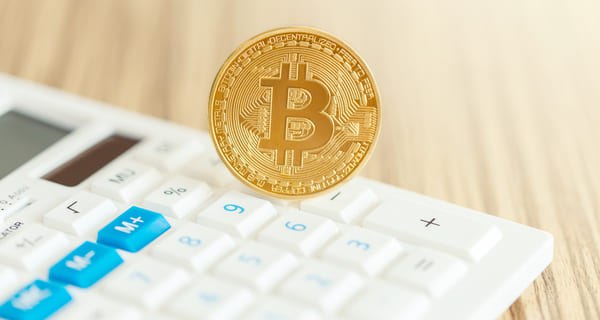Bitcoin confirmations are an integral part of the Bitcoin network and play a crucial role in ensuring the security and reliability of transactions. When a Bitcoin transaction is initiated, it is broadcast to the network, where it awaits confirmation by miners.
But just how many confirmations are needed before a transaction can be considered final? The answer to this question depends on several factors, including the level of security required and the size of the transaction. Generally, however, most Bitcoin merchants and exchanges consider a transaction to be fully confirmed after six confirmations.
Each confirmation represents a new block added to the Bitcoin blockchain, which is a distributed ledger that records all Bitcoin transactions. Miners compete to solve complex mathematical problems in order to add a new block to the chain, and once a block is added, it becomes increasingly difficult and unlikely to be reversed or altered.
While one confirmation is generally considered secure enough for small, low-value transactions, larger transactions may require more confirmations to ensure that they are not affected by any potential network forks or double-spending attempts. The more confirmations a transaction has, the more secure and immutable it becomes.
In conclusion, Bitcoin confirmations are an essential part of the Bitcoin transaction process, providing security and peace of mind to users and merchants alike. By waiting for a sufficient number of confirmations before considering a transaction final, individuals can trust that their funds will arrive safely and that the transaction cannot be easily reversed or tampered with.
The Importance of Bitcoin Confirmations for Transactions
Bitcoin confirmations play a crucial role in ensuring the security and reliability of transactions on the Bitcoin network. When a Bitcoin transaction is initiated, it is broadcasted to the network, where it awaits confirmation.
A confirmation occurs when a miner includes the transaction in a block and solves the mathematical puzzle required to add the block to the blockchain. The number of confirmations a transaction has indicates how many blocks have been added after the block containing the transaction.
The more confirmations a transaction has, the more secure and trustworthy it becomes. Each confirmation adds an additional layer of protection against potential double-spending or fraudulent activities. As the number of confirmations increases, the probability of a transaction being reversed decreases significantly.
Bitcoin transactions are typically considered secure after six confirmations, as the probability of a transaction being reversed at this point is extremely low. However, some merchants may require more confirmations, depending on the value or risk associated with the transaction.
Additionally, the importance of confirmations extends beyond security. Confirmations also determine the speed at which a transaction is considered final. While a transaction may be visible on the network immediately after being broadcasted, it is not considered final until it has been included in a block and has a certain number of confirmations.
Overall, Bitcoin confirmations provide a vital layer of security and reliability to Bitcoin transactions. They protect against fraud, ensure transactions are final, and contribute to the overall trustworthiness of the Bitcoin network.
What Are Bitcoin Confirmations and Why Are They Important?
Bitcoin confirmations refer to the number of times a transaction has been validated and included in a block on the Bitcoin blockchain. Each confirmation adds an extra layer of security and reduces the risk of a transaction being reversed or double-spent.
When a Bitcoin transaction is initiated, it is propagated across the network, where it awaits confirmation by Bitcoin miners. Miners are responsible for validating and processing transactions by including them in a new block on the blockchain. Once a transaction is included in a block, it receives its first confirmation.
As more blocks are added to the blockchain, further confirmations are obtained. The more confirmations a transaction has, the more secure and irreversible it becomes. It is generally recommended to wait for a certain number of confirmations before considering a transaction as fully confirmed and final.
The number of confirmations required may vary depending on the specific use case or the value of the transaction. For small purchases or non-critical transactions, a few confirmations may be sufficient. However, for high-value transactions or situations requiring a high level of trust, it is common to wait for a higher number of confirmations, such as six or more.
Bitcoin confirmations are important because they provide a decentralized mechanism for reaching consensus and ensuring the integrity of transactions. They serve as a protection against various types of attacks, such as double-spending, where a user attempts to spend the same Bitcoin twice. The more confirmations a transaction has, the more difficult it becomes for an attacker to manipulate or reverse the transaction.
Furthermore, Bitcoin confirmations help prevent potential conflicts or disputes between parties involved in a transaction. By waiting for multiple confirmations, both the sender and the recipient can have stronger confidence that the transaction is valid and irreversible.
In summary, Bitcoin confirmations are crucial for establishing the immutability and finality of transactions. They provide a way to verify the legitimacy of transactions and protect against potential fraud or manipulation. The number of confirmations required may vary depending on the specific use case, but generally, more confirmations result in a higher level of security and trust.
How Many Confirmations Are Required for Bitcoin Transactions?
When you make a Bitcoin transaction, it is important to understand how many confirmations are required for the transaction to be considered final and secure. Confirmations are an essential part of the Bitcoin network that helps prevent double-spending and ensure the integrity of the blockchain.
How Confirmations Work
When you initiate a Bitcoin transaction, it is broadcasted to the network of computers known as nodes. These nodes validate your transaction and add it to the mempool, which is a waiting area for pending transactions. Miners, who are responsible for maintaining the Bitcoin network, periodically pick transactions from the mempool and include them in a new block.
Once a transaction is included in a block, it is considered to have one confirmation. As more blocks are added to the blockchain, the number of confirmations for the transaction increases. Each new block added to the blockchain further secures and validates the transaction.
Number of Confirmations Required
The number of confirmations required for a Bitcoin transaction depends on the level of security you need. In general, most exchanges and merchants require at least six confirmations before considering a transaction as final. This requirement is based on the fact that the more confirmations a transaction has, the harder it becomes to reverse or tamper with.
For smaller purchases or less critical transactions, such as buying coffee or groceries, one or two confirmations may be sufficient. These transactions are generally of lower value and have lower risks associated with them.
On the other hand, high-value transactions, such as buying a car or a house, may require many more confirmations to ensure the highest level of security. These transactions often involve a significant amount of money and require multiple confirmations to minimize the risk of fraud or double-spending.
Factors to Consider
While the number of confirmations is an important factor to consider, there are other factors that can affect the security and finality of a Bitcoin transaction. These factors include the fee paid for the transaction, the network congestion, and the computational power of the miners.
Higher transaction fees usually attract more miners, resulting in faster confirmations. Network congestion, on the other hand, can cause delays and increase the time required for confirmations. It is essential to consider these factors and adjust your expectations accordingly when making Bitcoin transactions.
In conclusion, the number of confirmations required for a Bitcoin transaction depends on the level of security you need. While most exchanges and merchants consider six confirmations as sufficient, the actual number may vary depending on the value and importance of the transaction. It is crucial to weigh the risks and take into account other factors that can affect the transaction’s security and finality.
The Role of Confirmations in Ensuring Transaction Security
When it comes to the security of Bitcoin transactions, confirmations play a crucial role. Confirmations are the number of times a transaction is included in a block of the Bitcoin blockchain. Each block contains a list of transactions that have been validated and added to the blockchain through a process called mining.
So, how do confirmations contribute to transaction security? As more confirmations are added to a transaction, the more secure it becomes. This is because each confirmation represents another layer of verification and validation by the decentralized network of Bitcoin miners.
Imagine a scenario where a transaction has only one confirmation. This means that it has been included in one block and has received one level of verification. While this is already considered relatively secure, it is still vulnerable to a potential attack. An attacker could theoretically attempt to reverse the transaction by mining a longer chain of blocks that does not include the transaction.
However, as more confirmations are added to the transaction, the more difficult and costly it becomes for an attacker to reverse it. This is because an attacker would need to mine additional blocks that include the transaction and surpass the number of confirmations it has received. The more confirmations a transaction has, the more computational power an attacker would need to exert in order to successfully reverse it.
A common practice is to wait for multiple confirmations before considering a transaction as fully secure. The number of confirmations required can vary depending on the specific use case and the value of the transaction. For example, some merchants may require only one or two confirmations for small purchases, while others may require six or more confirmations for larger transactions.
To further enhance transaction security, it is also important to consider the length of time it takes for confirmations to occur. The Bitcoin network aims to generate a new block approximately every 10 minutes. However, due to network congestion or other factors, it is possible for blocks to be mined at a slower rate. It is recommended to wait for a sufficient number of confirmations and a reasonable amount of time to ensure the transaction’s security.
| Confirmations | Security Level |
|---|---|
| 0 | Not yet included in a block |
| 1 | Basic security (can still be reversed) |
| 3 | Relatively secure for small transactions |
| 6 | Relatively secure for medium-sized transactions |
| 10 | Highly secure for large transactions |
In conclusion, confirmations play a vital role in ensuring the security of Bitcoin transactions. With each confirmation added, the likelihood of a successful attack decreases significantly. It is important to consider the number of confirmations required and the amount of time it takes for these confirmations to occur in order to determine the level of security for a transaction.
Factors That Can Affect the Number of Confirmations Needed
When it comes to the number of confirmations needed for a Bitcoin transaction, several factors may come into play. These factors can influence the time it takes for a transaction to be considered secure. Here are some of the main factors:
Network Congestion: The current state of the Bitcoin network can greatly impact the number of confirmations needed. When the network is congested, with a high volume of pending transactions, it can take longer for transactions to be confirmed. In such cases, more confirmations may be required to consider a transaction secure.
Transaction Fee: The transaction fee paid by the sender can also affect the number of confirmations needed. Miners prioritize transactions with higher fees, so a higher fee can result in quicker confirmations. Conversely, a lower fee may require more confirmations for a transaction to be considered secure.
Security Requirements: Different merchants or service providers may have varying security requirements. Some may consider one confirmation sufficient, while others may require several confirmations for added security. The number of confirmations needed can depend on the specific security policies in place.
Value of the Transaction: The value of the transaction can also influence the number of confirmations needed. For smaller transactions, a single confirmation may suffice. However, for larger transactions involving significant amounts of Bitcoin, more confirmations may be necessary to provide enough security and reduce the risk of double-spending.
Attacks and Vulnerabilities: In the event of a potential attack or vulnerability in the Bitcoin network, the number of confirmations needed may be increased to mitigate risks. This can happen when new security threats emerge or when there are concerns about the overall integrity of the network.
Blockchain Forks: Occasionally, the Bitcoin blockchain can experience forks, resulting in multiple versions of the blockchain. During such events, the number of confirmations needed may be increased to ensure that the transaction is included in the longest and most valid chain.
Confirmation Speed: Finally, the confirmation speed can also be influenced by the sender’s choice of the transaction’s priority. Users can choose between regular, priority, or custom fees, which can impact how quickly the transaction gets confirmed. Higher priority transactions are typically included in blocks sooner, resulting in faster confirmations.
It’s important to note that the number of confirmations needed can vary depending on the factors mentioned above. Users should consider these factors and the specific requirements of the recipient when determining the appropriate number of confirmations for their transactions.
Why Some Transactions May Require More Confirmations
While most Bitcoin transactions only require a few confirmations to be considered valid, there are certain cases where more confirmations may be needed. These situations include:
1. Large Transactions
When a transaction involves a large amount of Bitcoin, it is recommended to wait for more confirmations to ensure the transaction is secure. This is because larger transactions are more attractive to attackers who may try to double-spend the funds.
2. High-Value Transactions
Similar to large transactions, high-value transactions also require more confirmations. This is because the higher the value of the transaction, the more incentivized attackers are to try and double-spend the funds.
In both cases, waiting for additional confirmations adds an extra layer of security and reduces the risk of a double-spend attack.
Note: It’s important to consider that the number of confirmations required for a transaction can vary depending on the recipient’s policies or the platform being used. Some platforms may require a higher number of confirmations for certain transactions to mitigate potential risks.
Remember, the more confirmations a transaction has, the more secure it becomes, but it also takes more time for the transaction to be considered finalized.
Q&A: How many confirmations for bitcoin
How does the Bitcoin network confirm transactions, and what role does the term “confirmation” play in the cryptocurrency ecosystem?
The Bitcoin network confirms transactions through a process called mining, where miners solve complex mathematical problems to add a new block to the blockchain. Confirmation refers to the number of blocks added after a transaction, ensuring its validity and security.
What is the significance of waiting for at least six confirmations when dealing with Bitcoin transactions?
Waiting for at least six confirmations enhances the security of a Bitcoin transaction. Each confirmation represents a new block added to the blockchain, making it increasingly difficult for malicious actors to reverse or alter the transaction.
How can one check the number of confirmations for a Bitcoin transaction using a block explorer?
You can use a block explorer to check the number of confirmations for a Bitcoin transaction by entering the transaction ID. The explorer will display details about the transaction, including the number of confirmations it has received.
What is the average confirmation time for a Bitcoin transaction, and why is this timeframe considered standard for most transactions?
The average confirmation time for a Bitcoin transaction is around 10 minutes. This duration is considered standard as it reflects the average time it takes for miners to solve the proof-of-work puzzle and add a new block to the blockchain.
Why is waiting for at least one confirmation advisable when making a Bitcoin transaction?
Waiting for at least one confirmation ensures that the transaction is added to the blockchain, providing basic security against double-spending. However, for higher-value transactions, waiting for more confirmations is recommended.
How does the backlog of unconfirmed transactions affect the average confirmation time on the Bitcoin network?
A backlog of unconfirmed transactions can lead to an increase in the average confirmation time. Miners prioritize transactions with higher fees, causing delays for transactions with lower fees in times of network congestion.
What role does the hash rate play in determining the average block time on the Bitcoin network?
The hash rate, or the total computational power of the network, influences the difficulty of solving the proof-of-work puzzle. A higher hash rate leads to shorter average block times, ensuring that new blocks are added to the blockchain at a relatively constant rate.
Why is the concept of 60 confirmations often mentioned in discussions about the security of Bitcoin transactions?
Sixty confirmations represent a high level of security for Bitcoin transactions. At this point, the probability of a transaction being reversed or altered becomes extremely low, making it practically irreversible.
What is the significance of three confirmations when assessing the validity and security of a Bitcoin transaction?
Three confirmations indicate that the transaction has been included in three consecutive blocks on the blockchain. While this provides a reasonable level of security, waiting for additional confirmations is recommended for higher-value transactions.
How does the use of a block explorer to check the status of a Bitcoin transaction contribute to transparency for users?
A block explorer allows users to view the details of a transaction, including its status and the number of confirmations. This transparency enhances user confidence by providing real-time information about the transaction’s progress and inclusion in the blockchain.






No responses yet